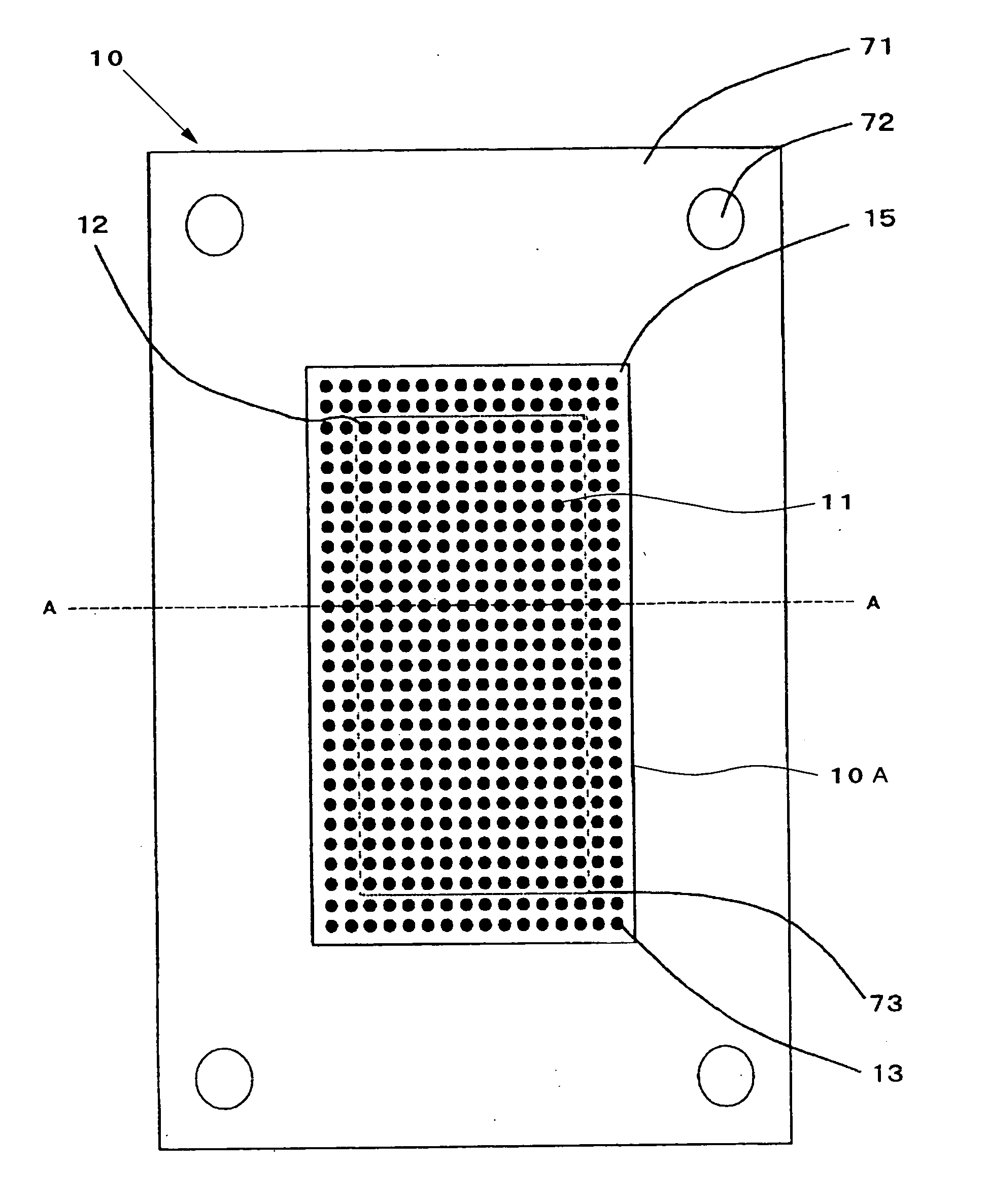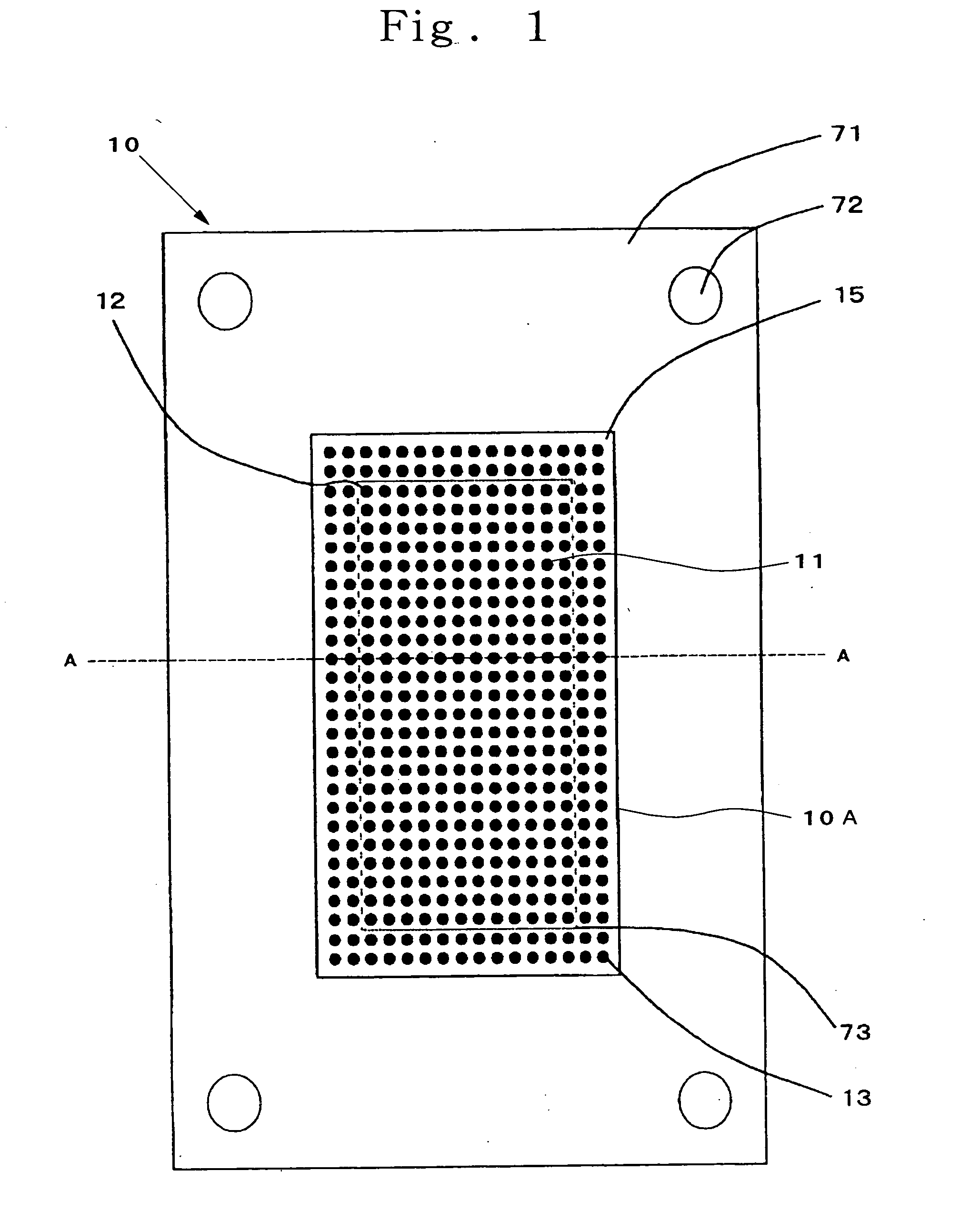Anisotropic conductive connector and its production method, and circuit device test instrument
- Summary
- Abstract
- Description
- Claims
- Application Information
AI Technical Summary
Benefits of technology
Problems solved by technology
Method used
Image
Examples
example 1
(a) Preparation of Supporting Body and Mold:
[0246] A supporting body of a structure shown in FIG. 4 and a mold for molding an anisotropically conductive film of a structure shown in FIG. 6 were prepared in accordance with the following conditions.
[Supporting Body]
[0247] The supporting body (71) is such that its material is SUS304, the thickness is 0.1 mm, the size of an opening (73) is 17 mm×10 mm, and positioning holes (72) are provided at 4 corners.
[Mold]
[0248] Ferromagnetic substance substrates (51, 56) are such that their materials are iron, and the thickness is 6 mm.
[0249] Ferromagnetic substance layers (52, 57) are such that their materials are nickel, the diameter is 0.45 mm (circular), the thickness is 0.1 mm, the arrangement pitch (center distance) is 0.8 mm, and the number of the ferromagnetic substance layers is 288 (12×24).
[0250] Non-magnetic substance layers (53, 58) are such that their materials are dry film resists subjected to a curing treatment, the thicknes...
example 2
[0260] An anisotropically conductive connector was produced in the same manner as in Example 1 except that addition type liquid silicone rubber (4) was used in place of the addition type liquid silicone rubber (5) in the preparation of the first molding material.
[0261] This anisotropically conductive connector will hereinafter be referred to as “Anisotropically Conductive Connector B2”.
example 3
[0262] An anisotropically conductive connector was produced in the same manner as in Example 1 except that addition type liquid silicone rubber (1) was used in place of the addition type liquid silicone rubber (2) in the preparation of the second molding material.
[0263] This anisotropically conductive connector will hereinafter be referred to as “Anisotropically Conductive Connector B3”.
PUM
 Login to View More
Login to View More Abstract
Description
Claims
Application Information
 Login to View More
Login to View More - R&D
- Intellectual Property
- Life Sciences
- Materials
- Tech Scout
- Unparalleled Data Quality
- Higher Quality Content
- 60% Fewer Hallucinations
Browse by: Latest US Patents, China's latest patents, Technical Efficacy Thesaurus, Application Domain, Technology Topic, Popular Technical Reports.
© 2025 PatSnap. All rights reserved.Legal|Privacy policy|Modern Slavery Act Transparency Statement|Sitemap|About US| Contact US: help@patsnap.com



